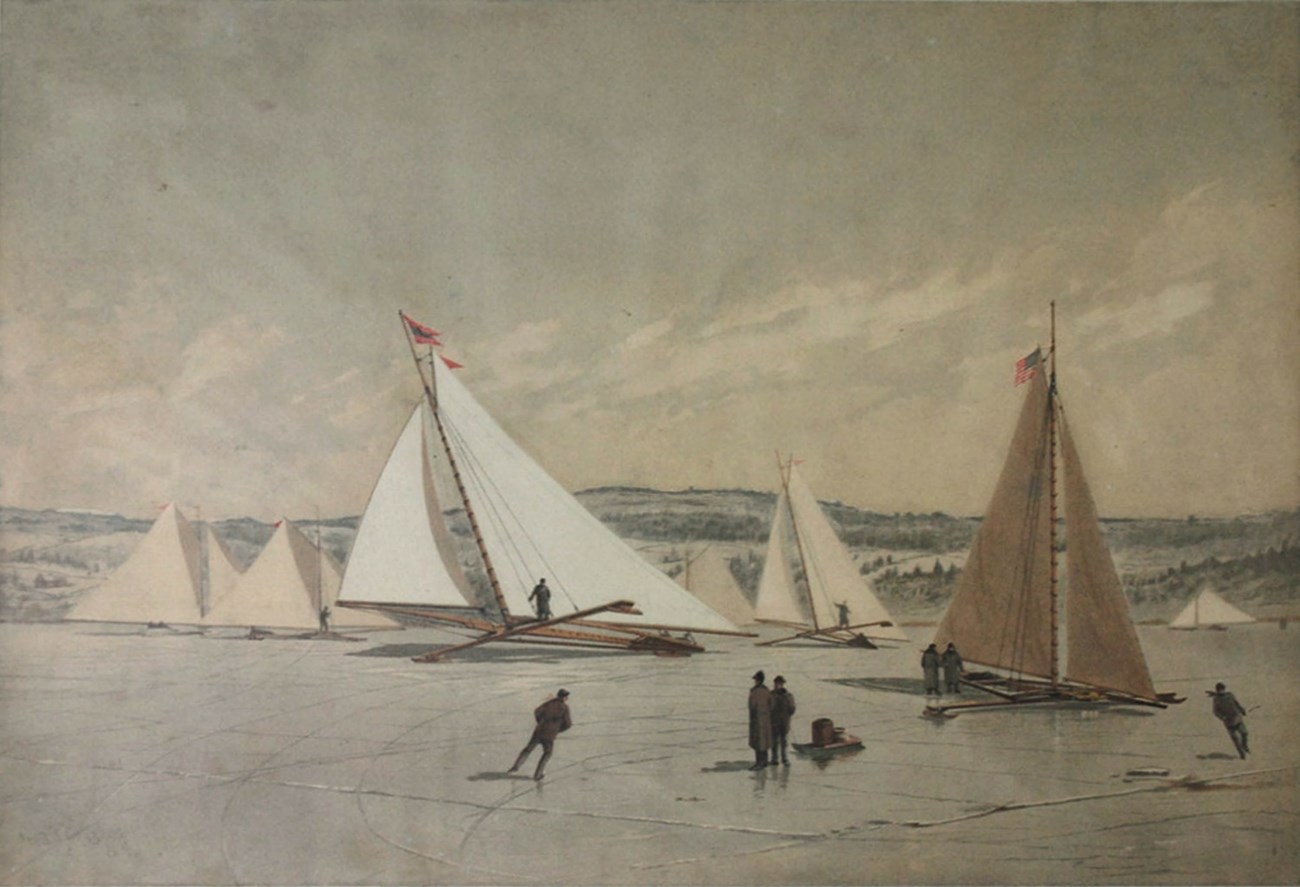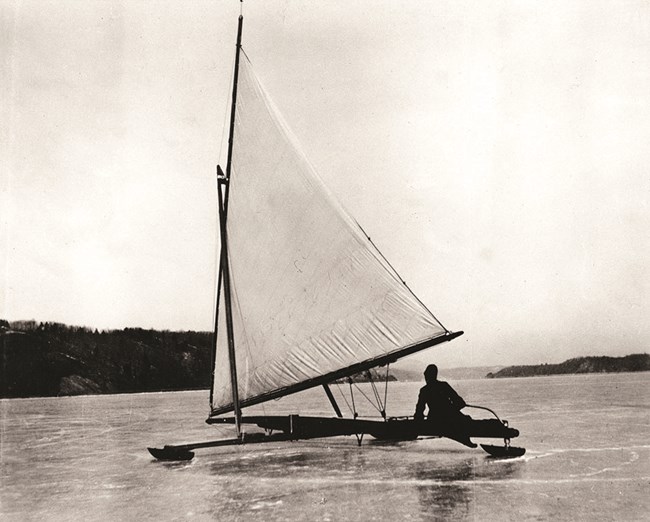Last updated: November 19, 2020
Article
Ice Yachting on the Hudson

Sailing on ice began as a utilitarian mode of transportation for the Dutch, who attached metal and wood runners to the bottoms of hulled working boats. Imported to the Dutch settlements of the New World, there are accounts of cargo in the form of sheep and people being transported on the Hudson River by ice boat from Athens to Albany in the early 1800’s. Robert Livingston even tried to explode a British warship frozen in Lake Champlain with an incendiary-loaded ice boat.
The recreational potential for sailing on ice quickly took over the imagination of Hudson River Valley residents. Ice boats were redesigned as light frame craft without traditional hulls, but utilizing the traditional gaff-rigged sail pattern of Hudson River Valley sloops for propulsion, and cast iron ice skates (or runners) as media. These became in fact the fastest vehicles on earth at the time, regularly beating the trains racing up and down the shores of the Hudson. Even in modest breeze, these boats could reach speeds of 75 miles per hour.
Wealthy property owners along the Hudson River had the resources to acquire ice boats, construct buildings to house them, and hire crews to maintain them. It did not take long for the landed gentry of the Valley to compete against one another for the biggest, fastest, most beautiful of ice yachts, commissioned by special builders. The Roosevelts were one such family, and competed with their club the Hudson River Ice Yacht Club against members from New York clubs in Chelsea, New Hamburg, Orange Lake, and Athens. John Aspinwall Roosevelt and his Hyde Park neighbor Archibald Rogers were two of the most competitive and successful Captains, successively building many boats, two of which, the ICICLE and the JACK FROST, went on to win again and again, the most significant prize in ice yacht racing—the Ice Yacht Challenge Pennant of America. John Roosevelt's ICICLE, built by Jacob E. Buckhout, was the largest of the classic yachts. At 70 feet long, it carried over one thousand square feet of canvas and had to be transported on a railroad flatcar.
The Hudson River Ice Yacht Club
The Hudson River Ice Yacht Club grew out of the Poughkeepsie Ice Yacht Club founded in 1861 as the first ice yacht club in the country. A dispute in 1885 surrounding the Ice Yacht Challenge Pennant of America resulted in the resignation of members who formed the Hudson River club, electing FDR’s uncle John A. Roosevelt as the first Commodore. The Hudson River Ice Yacht Club was known to have the finest-built and fastest ice yachts in the country. The club book of 1908 lists 52 ice yachts in its roster, including John Roosevelt’s ICICLE, VIXEN and KRISS, as well as FDR’s HAWK. FDR served a term as Vice-Commodore for the club.

FDR's Ice Yacht
Franklin Delano Roosevelt was especially influenced by this dramatic and romantic sport, from the example of his uncle John Roosevelt, and that of his Hudson Valley neighbors. FDR became passionate about ice yachting as he grew up watching his uncle John compete in races on the Hudson River. John Roosevelt won the prestigious Ice Yacht Challenge Pennant of America and was a founding member of the Hudson River Ice Yacht Club, still in existence today.
Built by George E. Buckhout of Poughkeepsie, New York, the ice yacht HAWK was presented to Franklin Roosevelt by his mother, Sara, as a Christmas gift on December 25, 1901. FDR sailed and raced the HAWK on the Hudson River chiefly during the years he was a student at Harvard. Today, the HAWK is preserved as part of the museum collection at the Home of Franklin D. Roosevelt National Historic Site.
